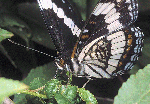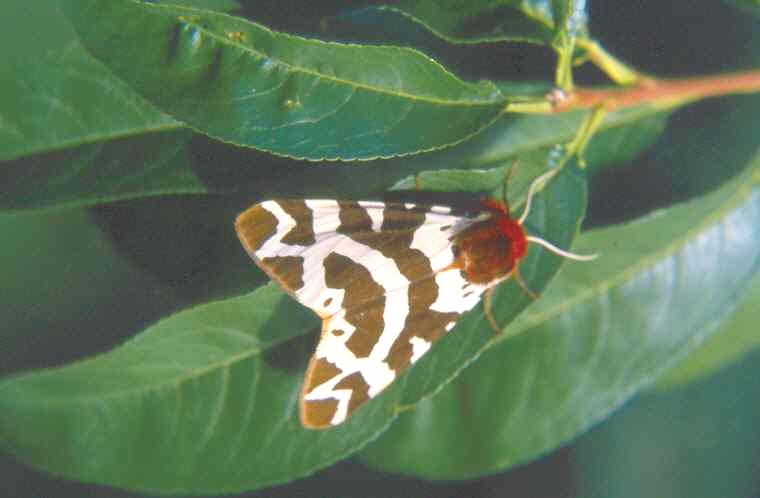
Utah Lepidopterists' Society
Founded 6 Nov 1976

|
|
Utah Lepidopterists' Society Founded 6 Nov 1976 |
|
| History | Mission | Meetings | Bulletin | Checklists | Links | Community | Field Trips | Habitat | Members | Kids | Contact Us |
Utah Habitats for Butterflies and Moths
Utah's Dixie!
 |
9. Utah's Dixie |
Slide Show of Utah's Dixie Habitat
Utah's physiogeographic region known as "Utah's Dixie" is located in the southwest corner of the state in Washington County. It represents one of the most picturesque biodiverse regions of Utah and one of the most scenic areas in the world. Sections of this region also known as "Utah's Color Country" display abrupt topographical changes ranging from volcanic remnants and mountains to Navajo sandstone hills and buttes; from a vast pinyon juniper mountainous terrain in the Pine Valley Mountains to the Joshua Tree Creosote covered Beaver Dam Mountains. In the words of Schmerker, "Utah's Dixie is where the Basin and Range province, the Colorado Plateau and the Mojave Desert converge into a surreal pile of rocks, flora and fauna..."
The history of the region is perhaps as equally enchanting as is its topography. After members of the LDS Church settled the Salt Lake Valley in 1847, Brigham Young soon sent Parley P. Pratt, along with 50 men, in December, 1849, to scope out the region. Parley P. Pratt's glowing report of the fertility and water availability soon prompted colonization. However, as was learned later, taming the Virgin and Santa Clara Rivers from drought and subsequent torrential floods became more than a challenge.
The reason why the region is referred to as "Utah's Dixie" is because of the establishment of the Cotton or Southern Mission in the city of Washington in 1857. Because of the Civil War, Brigham Young, knowing that the cotton necessary to make clothing would become scarce from warring states, hand picked and sent 38 experienced Southern families to till, sow, and harvest cotton.
Mainly because of its breathtaking vistas and mild winters, Utah's Dixie is one of the fastest growing regions in Utah where snowbirds, golf gurus, retirees, or anyone else looking for improved scenery are attracted to the region. In addition to local areas such as the Virgin River Gorge, Snow Canyon, Tuacahn, and Red Cliffs Desert Reserve, tourists and locals are also attracted to nearby Zion National Park, Cedar Breaks National Monument, and Bryce Canyon National Park. Even the Grand Canyon is within a few hours' drive from St. George.
In the state of Utah, there are certain environs that are only found in Utah’s Dixie; either because these areas are lower in elevation, further south, or both. Consequently, there are butterflies and skippers that are exclusive to these environs; which, can be broken down into five topographical subsections including the Utah Mojave, Virgin River Basin, Dixie Corridor, Dixie Montane, and Plateau.
The
Utah Mojave represents the northeastern limits of the Mojave Desert and is
situated in the extreme southwest corner of Washington County. At a
statewide elevational low of 2,200 feet, it includes the Mojave desert floor,
the Beaver Dam Wash, the Beaver Dam Slope, and even portions of the Beaver Dam
Mountains where Yucca brevifolia (Joshua trees) make an attempt to climb
the mountains. However, as witnessed by those who have driven old US 91,
Joshua trees haven't quite made it over the summit of Utah Hill.
Another plant that seems Utah Mojave specific is Thamnosma montana (turpentine broom); the larval hostplant of Papilio coloro (the desert swallowtail). Other butterflies that one might find in the Utah Mojave are Thessalia leanira alma (leanira checkerspot), Apodemia mormo mormo (mormon metalmark), Callophrys comstocki (desert green hairstreak), Heliopetes ericetorum (northern white skipper), and, in some years, Libytheana carinenta larvata (american snout).
The Virgin River Basin represents the riparian section of the St. George basin and includes the Santa Clara and Virgin Rivers. The plant community found here include Larrea tridenta (creosote bush), Atriplex lentiformis (big saltbush), Phragmites australis (common reed), Baccharis glutinosa (false seep willow), Salix exigua (sandbar willow), Populus fremontii (cottonwood), and, unfortunately, Tamerisk ramosissima (salt cedar). Some of the butterflies that you would find here are Danaus gilippus thersippus (queen), Precis coenia (buckeye), Ochlodes yuma yuma (yuma skipper), and Limenitis archippus obsoleta (arizona viceroy).
The Dixie Corridor, on the other hand, represents the rest of the St. George basin including low elevation lava hills and ridges, Bloomington buttes, red navajo sandstone hills; as well as the Yucca utahensis, Larrea, and Rumex covered sand dunes found in the vicinity of Warner Valley. Some of the butterflies and skippers that you would find in this subsection would include Chlosyne lacinia (bordered patch), Anthocharis cethura pima (desert orangetip), Euchloe (hyantis) lotta (desert marble), Euphydryas anicia hermosa (variable checkerspot), Chlosyne neumoegeni neumoegeni (desert checkerspot), Papilio indra calcicola (cliff swallowtail), Apodemia palmeri (palmer's metalmark), Pyrgus scriptura (small checkered skipper), and Megathymus yuccae coloradensis (yucca giant skipper).
The Montane region of Utah's Dixie is represented mainly by the Pine Valley Mountains--the highest point reaching 10,365 feet--in the northcentral portion of Washington County. One of the more picturesque canyons in Utah's Dixie that demonstrates a subtle transition from Dixie Corridor to Montane is Leeds Creek or Leeds Canyon.
The mouth of Leeds Canyon (3900') contains navajo sandstone ridges with a desert community of common trees and shrubs such as Larrea tridenta (creosote bush), Juniperus osteosperma (utah juniper), Quercus turbinella (permanent oak), Populus fremontii (cottonwood), and Prunus fasciculata (desert almond). Some of the butterflies that you might find at the lower area of Leeds Creek include Callophrys siva siva (juniper hairstreak), Nymphalis antiopa (mourning cloak), Anthocharis cethura pima (desert orangetip), Anthocharis sara thoosa (southwestern orangetip), Adelpha eulalia (arizona sister), Brephidium exilis (pygmy blue), Euphydryas anicia hermosa (anicia checkerspot), Cyllopsis pertepida dorothea (canyonlands satyr), and Erynnis meridianus (meridian duskywing).
As you proceed up the canyon heading east towards Oak Grove Campground; approaching the Pine Valley Mountains, the desert community transitions from creosote shadscale scrub to pinyon juniper. At the same time, as you proceed up the canyon, Quercus turbinella is replaced by Quercus gambellii; Penstemon palmeri is replaced by Penstemon eatonii; and Lomatium parryi (parry lomatium) is replaced by a small population of Lomatium scabrum tripinnatum (cliff lomatium).
One of the species of butterflies that is found more commonly in the higher portion of Leeds Canyon at Oak Grove Campground is Papilio bairdi (baird's swallowtail).
Another locale in the Pine Valley Mountains is Pine Valley Campground itself. Although Pine Valley Campground is only roughly four aerial miles from Oak Grove Campground, it would require a 63 mile drive to access one from the other as the terrain separating the two campgrounds is rugged wilderness. Therefore, Pine Valley Campground is only accessible from the northwest from Utah Hwy 18; and then southeast from Central.
At an elevation of 7,000 feet, the ponderosa pine/aspen community of Pine Valley Campground is picturesque and offers a unique mix of butterflies including Adelpha eulalia (arizona sister), Limenitis weidemeyeri weidemeyeri (weidemeyer's admiral), Papilio bairdi (baird's swallowtail), Papilio rutulus (western tiger swallowtail), Papilio multicaudatus multicaudatus (two-tailed swallowtail), Zerene cesonia (southern dogface), Ochlodes sylvanoides omnigena (woodland skipper), Speyeria nokomis apacheana (nokomis fritillary), and Speyeria hesperis chitone (northwestern fritillary).
The Plateau region of Utah's Dixie includes the navajo sandstone, chinlea, and other rock formation knolls, buttes, and mesas located in the south southeastern portion of Washington County including Warner Ridge, Sand Mountain, Mollies Nipple, Vermillion Cliffs and Hurricane Cliffs transitioning into Zion National Park.
Some of the butterflies that you would find in this region include Precis coenia (buckeye), Apodemia mormo mormo (mormon metalmark), Polygonia satyrus (satyr comma) Brephidium exilis (pygmy blue), and Megathymus yuccae coloradensis (yucca giant skipper).
Utah's Dixie truly is one of the most scenic areas on earth. Ironically, one of the best places to witness the variety of scenery is along I-15 itself. As you drive southwest from Cedar City down to St. George, looking north, you can see the dixie corridor transition to montane as you witness the layering of navajo sandstone hills and lava ridges against the backdrop of the Pine Valley Mountains. At the same time, if you look to the south, your vista is completely different as you witness many of the plateau buttes and knolls against an incredible backdrop of Zion National Park.
Incredible!
Todd L. Stout
(This article is dedicated to my grandparents, the late Heber Parley Smith, Sr., and Verna Louisa Wood Smith!)

Picturesque view of grasslands in the foreground, followed by Yellow Knolls Ridge, lava hills, and, lastly the snow-covered Pine Valley Mountains in the background.

Specific Habitat Locations:
| Welcome Spring | Pine Valley Campground |
Swallowtails and Parnassians (Family Papilionidae)
|
Brush-footed Butterflies (Family Nymphalidae)
|
Gossamer-wing Butterflies (Family Lycaenidae)
Metalmarks (Family Riodinidae)
|
|
Skippers (Family Hesperiidae)
|
Whites, Orange-Tips and Sulphurs (Family Pieridae)
|
All images of Limenitis weidemeyeri on the ULS Info Bar courtesy Jay Cossey
|
|